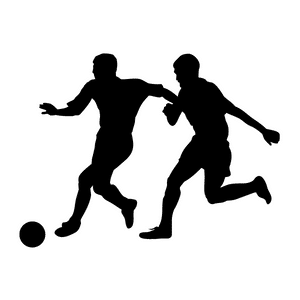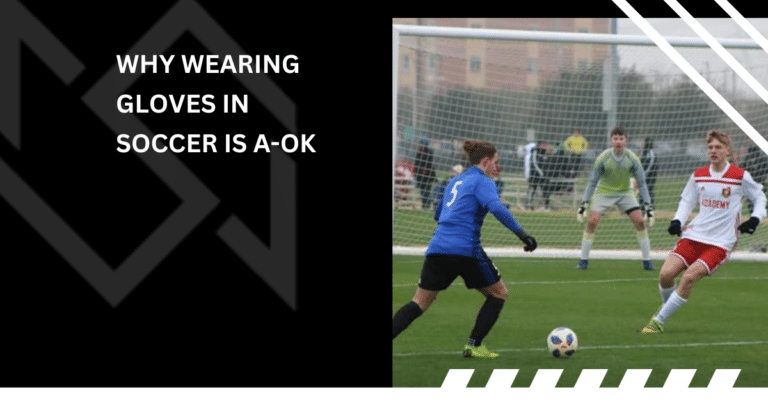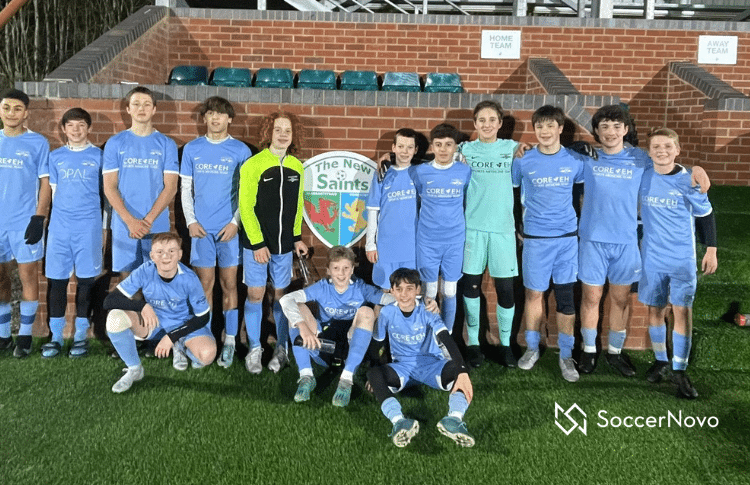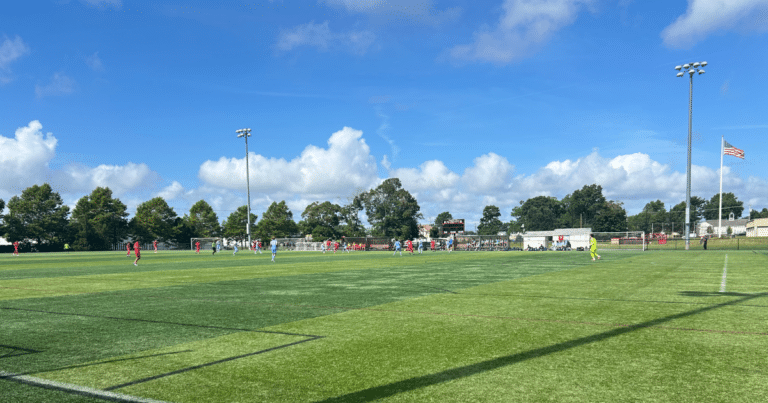What Is a Rondo in Soccer?
In soccer, a “rondo” is a small-sided practice game where the objective is for one team to keep possession of the ball while the other team tries to win it back. Think of ‘monkey in the middle’ almost.
It’s often used as a warm-up before games and training sessions. It is also a great exercise to work on technical skills such as passing and movement off the ball in smaller spaces.
The game is typically played in a circular or oval shape, with players quickly passing the ball to each other while the defensive team tries to intercept it.
Whether this is your first time seeing this term or you’ve come here looking for answers, this article is packed with information about rondos in soccer, so keep on reading.
What Does Rondo Mean?
 If you’re a basketball fan and when you hear ‘Rondo’, you may immediately think of Rajon Rondo. But, obviously there’s no affiliation!
If you’re a basketball fan and when you hear ‘Rondo’, you may immediately think of Rajon Rondo. But, obviously there’s no affiliation!
A rondo refers to a type of training drill where a group of soccer players try to keep the soccer ball in their possession. To be more specific, a group of players will do their best to keep the ball away from one or more of their opponents.
To make this happen, players of the same team usually split into two uneven sides. The players with the numerical disadvantage have the task of recovering the ball.
During training, players have to form a circle or grid, with the defenders being in the rondo’s center. The players in the middle must try to win possession of the soccer ball by anticipating passes and moving quickly to tackle defenders.
Even though one ball is used in most rondos, sometimes extra balls can be added. This not only gives the players an additional element to pay attention to but can also boost the pace of the drill.
The number of people in a rondo varies from one case to another. In general, though, at least three members are necessary, respectively a presser and two passers. But in order to keep the traditional rondo form going, adding more players is beneficial.
Where Did Rondo Originate From?
The term “rondo” is believed to have originated from the Spanish word “rondó”, which means “round dance”. This name likely reflects the circular nature of the game and the way players move around each other in a dance-like manner as they pass the ball.
The name “rondo” has since become widely used in the soccer world to refer to this type of possession-based training drill.
Johan Cruyff later took the rondo and used it during his Barcelona coaching practices in the 90s. He knew that the rondo would be very important and useful, and he also said that anything that happens in a match can be done in a rondo, except for shooting.
Playing a Rondo – How It’s Done
Playing a rondo game is pretty simple. The players who have the ball must do their best to keep it. Possession can be lost when the opponents intercept or tackle it, or when they lose possession outside the game’s circle.
The rondo doesn’t necessarily have to be an actual circle made of cones – it can simply be an imaginary circle. Its size can be controlled by the players or the coach as the game progresses. Sometimes progression from larger area to smaller area can restrict players to keep their passes quicker and tighter.
Most of the time, rondo games are quick. However, coaches may select a time or pass so the players take turns to attack or defend. This way, they spend time developing skills for when they are in either scenario.
What Makes Rondos so Great?
If you are just a beginner at this game, you may not see how rondos are beneficial. However, they can really make a change in the way players think and react during their soccer matches.
One benefit of rondo training is that it allows players to develop quick first touches.
The player with the ball must make the right first touch without losing possession. Receiving the ball puts them under pressure, but it helps them develop quick thinking and the ability to make the right next decision as soon as possible.
And the offensive benefits don’t stop here: players who frequently play rondos can improve their passing accuracy and ball control.
It’s not only the passers who enjoy the great benefits of rondos, though.
Defenders have just as many advantages in this type of training. When they are surrounded by opponents, they must do everything in their power to get possession of the ball. If they are quick and have the right techniques, they can pressure passers into making a mistake, allowing the defensive team to recover the ball.
Rondos help with teamwork as well. You are not alone in a rondo, but rather working alongside your teammates. Players learn how to pass to their teammates, but also how to receive a pass from other teammates. Additionally, it allows them to understand a passer’s next move.
If you are a coach reading this, try implementing rondos at any age. It can be as quick as a three-minute game to get the kids moving.
Rondo Drill Variations
Rondos come in different forms. The position of the players in a rondo can determine their success. Here are some common variations:
Central Player Rondo
During this rondo style of play, a player will be in the center, which creates triangles and angles for better passing lanes. This is beneficial for mimicking real-game attacks.
The player who is in the middle can achieve some spatial awareness. Afterward, they can find space by using sharp double-movements or playing on the defender’s shoulder.
4v1 or 3v1 Rondos
These types of rondos are more traditional, and they are the simplest forms they come in. They involve passing the ball and moving, keeping it away from the defender.
Of course, you can substitute any number versus a single player.
2 Teams versus 1 Team Rondo
In this rondo scenario, there are three teams in a big space. They all try to keep possession of the ball.
The first two teams do their best to keep the ball away from the third one.
However, if the third team manages to take the soccer ball away from a player from the first team, for instance, the third team and the second team will now try to keep the ball away from the first one.
The play will keep continuing as the ball gets stolen or deflected out of bounds.
Conclusion
Knowing what a rondo is can not only help you enjoy soccer games better but can help develop players as they need to maneuver and make decisions quickly.
Playing “rondo” in soccer has several benefits, including:
Technical Skills: Rondos require players to make quick, precise passes and receive the ball under pressure, which can help improve their dribbling, passing, and first touch abilities.
Teamwork: Rondos encourage players to work together and support each other as they try to maintain possession of the ball. This can help build trust and communication between players on the field.
Fitness: Rondos are often played at a high-tempo and require players to be constantly on the move, which can help improve their fitness and endurance levels.
Decision-making: Rondos force players to make quick decisions about where to pass the ball and how to move without it, which can help improve their decision-making abilities in game situations.
Creativity: Rondos often require players to find new and creative ways to keep possession of the ball, which can help encourage players to be more imaginative and confident on the field.
If you haven’t tried playing rondos with your team, then you are missing out! Implement these in your normal training sessions and prior to games for warmups. You’ll see improvement over the course of the season.

Written By: SoccerNovo
SoccerNovo is an independent youth soccer media brand built to help parents, players, and coaches better understand the game and the pathways available in U.S. soccer. Our mission is to make youth soccer simpler, clearer, and more accessible for everyone involved in it.
Let’s connect






